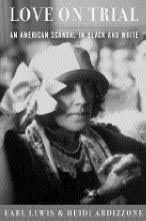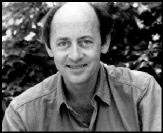Last month, Pam Houston stopped in Seattle on her third nationwide book tour to read from her new collection of nonfiction. On the night of her Elliott Bay Book Company reading, the room was overflowing. As Houston spoke, listeners leaned forward in their chairs and gazed up at the author, their faces shining. They laughed at the slightest touches of humor, grew misty-eyed at hints of sadness or loss, tilted their heads and cocked their eyebrows at the simplest questions—clearly, this group was feeling a strong personal connection with the author.
A Little More About Me by Pam Houston (Norton, $23.95)
Seven years ago, Houston’s first book, Cowboys Are My Weakness, charmed readers of popular fiction with its jaunty stories of women whose spunk and independence in extreme outdoor adventures can’t seem to correct their tendency to choose emotionally unavailable men. Last year’s Waltzing the Cat, Houston’s book of linked stories featuring itinerant photographer Lucy O’Rourke as the loving-and-often-losing protagonist, offered more narratives of risk and daring in romance and in the wilds.
It isn’t surprising that such tales appeal to a nation of people who are spiritually footloose, financially flush, and bombarded daily with images of erotic adventure. But the affection readers feel for Houston isn’t just about her writing; they identify with the author, vicariously entering her life as if they were her friends and comrades by doing things her characters did. Braced by Cowboys and the author’s apparent encouragement, they ditch an unresponsive mate or plunge down the same rapids ridden by one of her narrators. At Houston’s reading, a member of the audience told me she’s a fan because “Pam and I are so alike. We both have chutzpah, and we do lots of the same things.”
Houston says little to discourage the increasing inability of many readers to separate life from fiction. At Elliott Bay, she mentioned parallels between her life and the lives of her protagonists, and in my interview with her the following day she mused about her “weird confusion between fiction and nonfiction.” She says the “More” in A Little More About Me is a way of teasing her publishers, who worry that disagreeable characters in Houston’s work could become pretexts for libel suits. And dust jacket blurbs invite the public to believe that Houston is always writing autobiographically. The publishers market Houston’s “incredible honesty and unique personality” right along with her books; “Pam Houston inspires love,” declares the back of her latest.
One trouble with this faux intimacy is that it allows Houston to demand less of herself as a writer—thus she doesn’t push herself toward complexity or depth. She writes loose, one-dimensional sequences of perceptions without reflection, so the texture of her narratives is thin. Her characters (even the personae in the essays) are on the simple side—simpler than Houston herself. She often lets her writing off the hook midsentence and resorts to misty locutions like “something,” or “it,” as in “it’s got something to do with what’s elemental,” or in her vague direction to “make decisions that will keep the rivers flowing.”
Houston doesn’t set out cynically to hook an audience by writing this way. She’s not like the poet Billy Collins, who frankly admits that he writes every poem with the aim of pleasing his loyal band of readers by taking them on the kind of little ride they like and giving them a surprise at the end, like a daddy whose children have behaved well in the car. She aims higher; so why not ask a little more of, rather than about, her? She’s not yet 40, and she’s already good at her craft. She has time—and should take the time to—really write, and ripen.
Judy Lightfoot is a poet and freelance writer who teaches at Lakeside School. Pam Houston will return to Seattle in November for an appearance at Northwest Bookfest.







